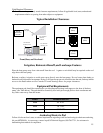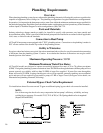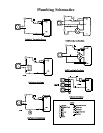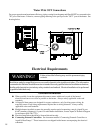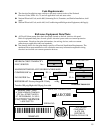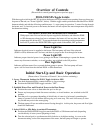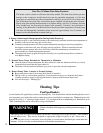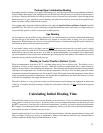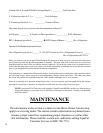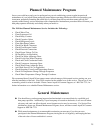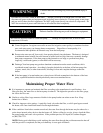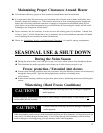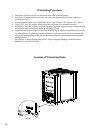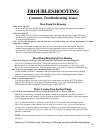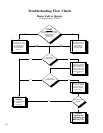
23
Pool and Spa Combination Heating
Everything stated for heating a pool applies for heating a spa; only the volume of water being heated is different.
TropiCal model heat pumps come equipped with two thermostats. One thermostat is for the pool and the other is
for the spa. Simply position the pool and spa isolation valves as directed by your installer; select the appropriate
thermostat (pool or spa), whichever you are heating, and with electrical power and water flow supplied to the
heater, the water will be maintained at set point.
Your system can be automated with the addition of an optional AquaCal Universal Heater Control (AquaCal
part #0097TS). This will save you from having to change the thermostat switch each time you change from pool
to spa and back again. For details, contact your installing dealer.
Spa Heating
Air blowing into your spa while it is being heated will very often neutralize or partially counteract the heat being
put into the spa by the heater; this added heat loss equates to increased time to bring your spa to desired
temperature. When heating a spa, be sure to turn off the air blower. Air induced through the spa jets should also
be eliminated, during warm-up, whenever possible.
If your heater is being used to only heat a spa, the
POOL thermostat can bet used as a set-back control: simply
set the pool control at a point 10-15º F below desired spa heat temperature, and select the pool thermostat. This
method allows the spa–when not in use– to be held at a heated temperature, but somewhat lower than normal
spa-use temperature. One would want to blanket the spa if using this set-back method. This method will result in
reduced warm up periods over full-cold start ups.
Heating in Cooler Weather (Defrost Cycle)
When air temperatures drop below 50º F, your heat pump may go into a defrost cycle. The defrost cycle is
initiated by a sensor on the evaporator (air coil). When the evaporator temperatures fall to a point where ice
begins to form on the fins, the heat pump will shut down. The heat pump will remain in the defrost mode until the
evaporator coil temperature rises. In the event the air temperatures are below 40º F, the heat pump will remain
in the defrost mode until temperatures rise above the 40º mark. The length of time the heat pump is in the defrost
mode is dependent upon the air temperature: the warmer the air temperature, the shorter the defrost cycle; the
colder the air temperature, the longer the defrost cycle.
The need to defrost, is a very good reason why you should operate your heat pump only during the warmest part
of the day. Late night and early morning is usually the coolest time of the day, and
least efficient for heat pump
operation.
Calculating Initial Heating Time
The initial time it takes to get your pool warm depends on several factors. First you will need to determine how
many gallons of water are in your pool. If you know this, you can compute the pounds of water in the pool and
the BTU's necessary to heat the pool to the desired temperature. Secondly, you need to know the approximate
BTU output of your heat pump at the ambient air temperature. Finally, you will need to determine the tempera-
ture at which you plan to maintain your pool or spa.
Sounds complicated, but it's not! You can use the following worksheet to calculate approximately how long it will
take your heater to bring your pool up to temperature. Keep in mind that the time will vary somewhat due to
weather conditions during the period that the heater is in use.



